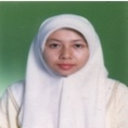A clinical review of large cerebello pontile angle tumors.
キーワード
概要
The study was designed as retro-prospective and the study period was 3.5 years. A total of 66 (42 prospective and 24 retrospective) consecutive patients were included in the study. The commonest tumor in CPA is the Schwannoma (76%) followed by Meningioma (13.3%) and Epidermoid (4.44%). Unusual forms are Ependymoma and Hemangiopericytoma. Amongst the troublesome clinical features headache, hearing loss, vertigo and imbalance, vomiting and tinnitus were more important besides visual failure and features of lower cranial nerve involvement. The objective of the study is to "Review the Large Cerebello Pontile Angle tumors clinically". In this study 66 large CPA tumors were included and analyzed. Analysis of variance (ANOVA) was implied for the test of significance. On the whole, n=66 Schwannoma represents 76.70% and Meningioma 15.38%. Of these there are 45 cases with histological verification. The most common presenting (average duration is 1.3 years) symptoms were Headache (94.54%) and Hearing loss of varying grade (85.45%). Vertigo or imbalance was present in 67.27% cases. Vomiting was found in 54.54% of the times and difficulties in deglutition or voice change were complained of in 29.09% cases. Tinnitus was found only in 27.27% cases and it was the complaint mostly in lower diameter tumors. By maximum diameter, there were 24 cases measuring 3-4 cm, 15 more than 4 cm and only one case <3 cm sized tumors. Volume-wise tumors with volume <10 cc were 5 cases, 10-20 cc were 10, 20-30 cc were 13, 30-40 cc were 6 and >40 cc were 6. Similarly tumor volume and posterior fossa volume ratio was as follows: <10% were 6 cases, 10-20% were 15 cases, 20-30% were 7 cases and >30% were 6 cases. Amongst the schwannomas, the consistency of the tumor has been shown to be important factor for LCN involvement. The softer variety involved LCN more often than the harder (p<0.05). The involvement of the different groups of lower cranial nerve ranged from 7% to 92%.



